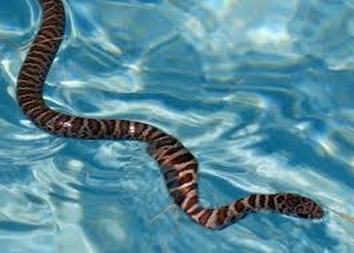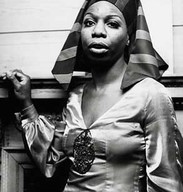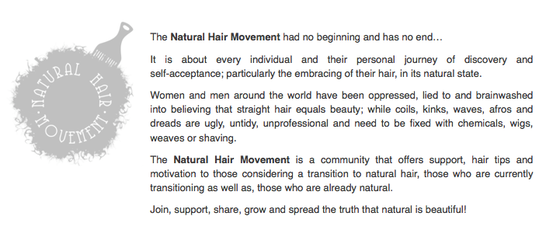_
 _- Tara (narrator) goes to Tallahassee to visit her Caucasian grandmother with her cousin Allison while her parents go on a research trip to Brazil.
- Grandmother has immediate trouble with the girl' behavior and with Tara's "unmanageable hair"
- Situation escalates, Grandmother attempts to control children by telling lies about snakes sending narrator into a panic causing strife between the cousins.
- Ends in Grandmother cutting off Tara's hair and Allison pushing Tara from a tree - resulting in the hospitalization of the narrator.
- Years later, when visiting Allison after her suicide attempt, both Allison and Tara reveal it was Tara who jumped from the tree, not Allison who pushed her.
In the short story, "Snakes", by Danielle Evans, the main character, Tara, is a nine year old of interracial (a white mother and black father) parents who is visiting her grandmother for the summer while her highly educated parents take a research trip to Brazil. The main struggle of the story is between the Grandmother (Lydia) and Tara and stems from the Grandmother's inability to control her granddaughter. Initially, the main point of tension is concerning Tara's hair and the fact that neither Lydia nor Tara seem to have the ability to tame or subdue it. This can be seen as Lydia's rejection of her daughter's lifestyle - after all, Tara is the ultimate product of the decisions that her mother has decided to make. Initially, Tara reacts to this as any child would, by acting out - which she does by bonding with her rebellious Caucasian cousin, Allison, who is also rejected by Lydia for her poor grades and behavior (albeit not as harshly as Tara). However, as the cousins' rebellion escalates, Lydia's decision to tell terrifying stories about Anacondas in an attempt to subdue the girls shows that her need to control Tara has moved beyond her desire to dominate her granddaughter's aesthetics, but has transformed into a desire to be able to dictate the physical movement of Tara's body. Tara reacts to this new type of control by literally shutting down. Her terror of the "life threatening" anacondas can also be seen as a manifestation of the emotional distress caused by her Grandmother's attempt to control and subdue her. Tara is also isolated by this new type of control as her cousin, Allison, rejects Tara out of frustration with her reaction to their Grandmother's stories. Allison then begins mirroring Lydia's desire to control Tara as well as mirroring her rejection of behavior that she does not agree with. Immediately after Lydia cute Tara's hair, Allison pushes Tara from a tree, almost killing her. The short story ends years later when it is revealed that it was actually Tara herself that jumped from the tree. Although many readers' response to this moment is likely to be one of anger out of the injustice of the situation, it can also be viewed as a nine year old girl's attempt to regain agency and control of her own body in a situation where both of her family members are attempting to exert dominance and control over every aspect of her physical existence.
One of the main themes of “Snakes” is the struggle for control over the Black female body. This can be seen in the Grandmother's desire to control Tara's aesthetics, and also in her attempt to use the black female body as a vehicle through which she can also control her daughter. The desire to regain control and agency manifests itself physically when Tara jumps from a tree, injuring herself. The relationship between the control of aesthetics and the control of the physical movement of the body itself during a moment where the Grandmother locks Tara and her cousin in the bathroom, “Once we spent an entire morning locked in the bathroom. I'd been ordered not to come out until I had done something with my hair.” This moment creates a relationship between aesthetics and behavior and therefore physical control of the black female body. Additionally, because hair, a physical attribute that has come to be a source of pride and individuality for black females as well as a symbol of power in general, is what is being controlled in this instance, this interaction can be seen as the Grandmother attempting to take agency and power from Tara as well as compensate for her own lack of control. This can also be seen in the Grandmother's attempt to use Tara's body as a vehicle through which to control her mother. Later on in the short story, the narrator herself (Tara) recognizes that her Grandmother saw her as a type of do-over. However, by using Tara as a type of vehicle, she dehumanizes her and uses her. In the moments before the climax of the story in which the Grandmother removes all of Tara's hair, the two characters have a fight over Tara's mother in which Tara states, “Daddy says you took everything from my mother”. The immediate reaction to this is to cut off Tara's hair. Again, we see that the Grandmother associates a relationship between Tara's defiance and refusal to be used as a vehicle and the very symbol of black female pride. Again the Grandmother uses Tara's body to entrap her and control her physically. This moment is described by Evans as, “She started snipping quickly, unevenly, the rhythm of her anger punctuated by the growing pile of tight black curls on the floor. It didn't occur to me to run. It didn't occur to me that there was anywhere to go”. Tara's feeling of entrapment stems from her Grandmother's domination of her physical appearance. Tara's complete loss of agency in this moment results in a physical freezing – she cannot move and loses all power in a relationship that she already lacked much authority. Her only escape is to be physically lead away by her cousin. This lack of agency then physically manifests itself in the moment that Tara jumps from a tree, leading to her Grandmother's loss of power, but only at the hands of her daughter/Tara's mother. The struggle for control over the black female body takes the form of a relationship being formed between black aesthetics and physical control and domination as well as an attempt on the part of the Grandmother to use this relationship to deprive Tara of her individuality and free thinking. Ultimately, this struggle ends with Tara being forced to take extreme measures after undergoing a traumatic event which represents the quintessential symbol of white control over the black female body.
In the short story, "Snakes", the way in which Lydia attempts to control Tara's aesthetics and body in order to manipulate her gestures to a long history of white control of the black female aesthetic for purposes of dominance. As Barbara Christian points on in her text, Shadows Uplifted, several stereotypes concerning the Black female arose within literature during the time of slavery. These stereotypes greatly influenced white perception and treatment of the black female and were used to, "rationalize the institution of slavery" (Christian 9). Although certain personality traits were attached to each stereotype, the physical portrayal of the Black females playing each "role" were seen as the embodiment of these traits and, thus, became important symbols of inequality and black inferiority. The stereotypes that arose during this time did not die with the end of slavery, and were later used to legitimize the poor treatment of the Black female and also to establish her as less than human, and can still be seen in different types of media to this day.
 THE MAMMY: The Mammy was a construct of the Antebellum South that directly contrasted the image of the beautiful white "lady". In order to legitimize slavery, she was seen as the happy maid that is wise, and loyal to the white family, loving the master's children more than her own (Christian 12). Her physical characteristics are described by Christian as follows,“she is black in color as well as race and fat, with enormous breasts..her head is perpetually covered with her trademark kerchief to hid the kinky hair that marks her ugly” (11-12). Her kinky hair is important as it helps to keep her highly a-sexual, an important trait for the mammy. The mammy was a prevalent stereotype, and “Although the black woman is seldom focused on in antebellum literature, she almost always appears in the background as the contented and loyal mammy” (Christian 11). The portrayal of the mammy as contented and loyal is important as it helps to legitimize slavery and support the white fantasy of the "South's public dream" (12).
 THE JEZEBEL: The Jezebel, also known as the "loose woman", was a stereotype that was perhaps as prevalent as the portrayal of the mammy. In stark contrast to the chaste white woman, "the crux of the 'loose woman' image is the belief that black women, unlike white women, craved sex inordinately.” (Christian 13) The Jezebel not only created an animalistic portrayal of the Black female, but also helped to support the belief that because of their inherently sexual nature, they were impossible to rape. The Jezebel is physically described by Christian as, “she is good looking and passionate, but never beautiful, for her animal nature rather than her human qualities are foremost in her makeup. She ensnares men with her body rather than uplifting them with her beauty” (Christian 15). This shows the way in which the Jezebel both animalized and demonized the Black female, while simultaneously turning the white wives of the men that she has "ensnared" against her. This image shown to the left is of Dorothy Dandrige who played a type of overtly sexual Jezebel figure in the film adaptation of the Broadway "Carmen Jones". Although this is not a movie about a black female "ensnaring" white men, and is perhaps a type of proud reclaiming of the stereotype, Dandrige fits the physical description of the Jezebel as, "brown-skinned, rather than black, and voluptuous, rather than fat, and she possesses a sensuous mouth and a high behind” (Christian 15)
 THE MULATTA: The image of the Mulatta is not as prevalent within Antebellum literature or, for that matter, media in general as it serves as proof of miscegenation. However, when the image does rear its head as in the case of Cora Munro from the novel The Last of the Mohicans,"the mulatta is tragic. Often she is shown as caught between two worlds, and since she is obviously the result of an illicit relationship, she suffers from a melancholy of the blood that inevitably leads to tragedy” (Christian 16). This portrayal, perhaps, served as a type of "warning" of the negative impact that the mixing of races could have. The image used to the left is of the actress chosen to portray Cora Munro in the film adaptation of Last of the Mohicans, an "octaroon" character whose life ends in tragedy as most "Mulatta"'s tended to when portrayed.
 THE CONJURE WOMAN: Perhaps the most elusive of all the stereotypes, the conjure woman, "incorporates the signs of traditional African religions that the southern gentry pointed to as dark and evil, heathen forces" (Christian 16). The ultimate rationalization of slavery, her image served to portray the institution as positive for the slaves as it removed them from their pagan pasts and introduced them to Christianity (Christian 16). The image to the left is of Nina Simone, a prominent jazz musician and human rights activist who, in a time of pressure for African American to embrace the physical and social aspects of "whiteness", fought to preserve and to reclaim the image of the "conjure woman". Interestingly, as Christian points out, the conjure woman was also the only stereotype in which the Black female is given some respect as white owners often feared her; treating her with awe (17).
This history of white control of the black female aesthetic is not one that was short lived. In fact, many of these stereotypes still exist. Additionally, as evidenced in "Snakes", the method of seeking domination over the Black female body is not one that has completely vanished.
In what forms of media do we still see this type of aesthetic control? What are some examples of these stereotypes that we still see today?
To see a video of the cinematic history of the Mammy, click Read More
 This is a screen capture from the website Natural Hair Movement that was created to help support the movement that many African American men and women have begun taking part in that places emphasis on associating beauty and pride in natural African American hair. This website in particular provides tips and hints to help educate Black individuals on how to embrace this movement and provides support and community to those who are dedicated to changing the perception of Black hair. This topic in particular relates to Evan's short story, "Snakes" in that it specifically addresses the shame commonly associated with Black hair as well as the way in which the White community has historically dictated the standards of "beauty" and have not only excluded African Americans and their hair from qualifying as "pretty" or "handsome", but have also used these standards to control the African American experience as well as to manipulate them visually and aesthetically.
 For many Black women, "Natural" now means beautiful. This movement has prompted the posting of vast numbers of YouTube videos that not only discuss tips for men and women embracing this movement, but also that act in reaction to the movement itself. Many men and women are actually speaking out against this movement. One blogger on the website Natural Hair Community claims that the movement actually works against the Black community by sowing seeds of superiority and creating separation. The woman claims, "The elitist feeling that is growing with the Natural Hair Movement is just another way for us to divide. It smacks of all of the superficial marks of superiority we have lived by for so long. Light skin, dark skin, good hair, bad hair and now natural or relaxed hair. Enough already we need to stop finding ways to exclude each other and work to be a stronger more prosperous Black community no matter how we look." What are your thoughts? How is this movement beneficial? Can it also be negative? Also, how does this post further relate to "Snakes"?
|







